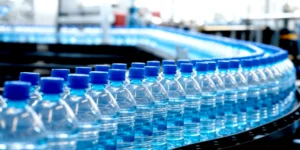Mineral Water Production Line
Meeting the Global Demand for Pure Drinking Water
As consumers become more health-conscious and environmentally aware, the global demand for mineral water continues to grow. To meet this rising demand, manufacturers are increasingly investing in advanced mineral water production lines that combine automation, hygiene, and efficiency.
A modern mineral water production line is not just a machine—it is a complete system that integrates washing, filling, capping, labeling, and packaging processes into a fully automatic and seamless operation. The result is consistent product quality, reduced labor cost, and high production output.
Core Features of a Modern Mineral Water Production Line
The mineral water production line is designed to deliver high efficiency, reliable performance, and flexible production capacity. Below are the key features that make it stand out:
High Productivity and Efficiency
This production line is engineered for continuous operation, capable of producing from 2,000 to over 30,000 bottles per hour, depending on the model. Each stage—from bottle rinsing to filling and capping—is precisely synchronized, ensuring consistent output with minimal downtime.
Wide Range of Bottle Sizes
From 200 ml single-serve bottles to 18–20 liter barrels for water dispensers, the mineral water line can handle a wide variety of container types. Quick-change systems make it easy for operators to switch between bottle sizes without long production interruptions.
Advanced Automation and PLC Control
The entire system is managed through a PLC (Programmable Logic Controller) with a human–machine interface. This allows operators to monitor, adjust, and troubleshoot all processes in real time, greatly improving stability and accuracy.
Process Flow of Mineral Water Production Line
The mineral water production process involves several essential stages, each contributing to the purity, safety, and quality of the final product.
1. Water Treatment System
The process begins with water purification. Raw water—whether from underground wells, springs, or municipal sources—passes through a multi-stage filtration system that may include sand filters, activated carbon filters, softeners, and reverse osmosis (RO) membranes.
This ensures the removal of impurities, bacteria, and heavy metals, producing water that meets national and international drinking standards.
H3: 2. Bottle Rinsing Machine
Cleanliness is vital in bottled water production. The rinser automatically washes the interior of each bottle with sterilized water or ozone-treated liquid to ensure hygienic filling conditions.
H3: 3. Filling Machine
The filling unit is the heart of the mineral water production line. Using gravity or normal pressure filling technology, the system ensures accurate liquid levels in each bottle. Stainless steel valves and food-grade components guarantee product safety and long-term durability.
H3: 4. Capping and Sealing
After filling, bottles move to the capping station, where caps are automatically fed, placed, and tightened. The entire capping system is precisely aligned to prevent leakage or contamination.
H3: 5. Labeling and Packaging
Finally, bottles are labeled, date-coded, and shrink-wrapped or packed into cartons. The packaging system ensures neat, secure, and visually appealing presentation ready for market distribution.
H2: Advantages of Using a Mineral Water Production Line
H3: Hygienic and Reliable Operation
All parts in contact with the product are made from stainless steel 304/316L, meeting strict food-grade standards. The closed-loop filling environment minimizes human contact, ensuring maximum hygiene and product safety.
H3: Cost-Effective and Energy Saving
Modern production lines are designed to minimize energy consumption and material waste. Efficient motors, optimized air systems, and intelligent bottle conveyors reduce operating costs and improve long-term ROI.
H3: Easy Maintenance and Operation
The design prioritizes user-friendly operation, allowing quick cleaning, maintenance, and troubleshooting. With intuitive touchscreen controls and modular components, technicians can easily manage the entire production line.
H3: Adaptable to Market Trends
As packaging designs evolve, the production line can be upgraded with new bottle molds, labeling systems, or digital monitoring features. This adaptability helps manufacturers stay competitive in a dynamic beverage market.
H2: Importance of Packaging Design in Mineral Water Bottling
In the modern marketplace, packaging is as important as the product itself. The appearance of mineral water bottles must be attractive, unique, and aligned with brand identity. Eye-catching bottle shapes and high-quality printing enhance product recognition and influence consumer purchasing decisions.
Beyond aesthetics, ergonomic and functional design also matters—bottles should be easy to carry, store, and pour. This combination of visual appeal and practicality is essential to building strong brand loyalty in the mineral water industry.
